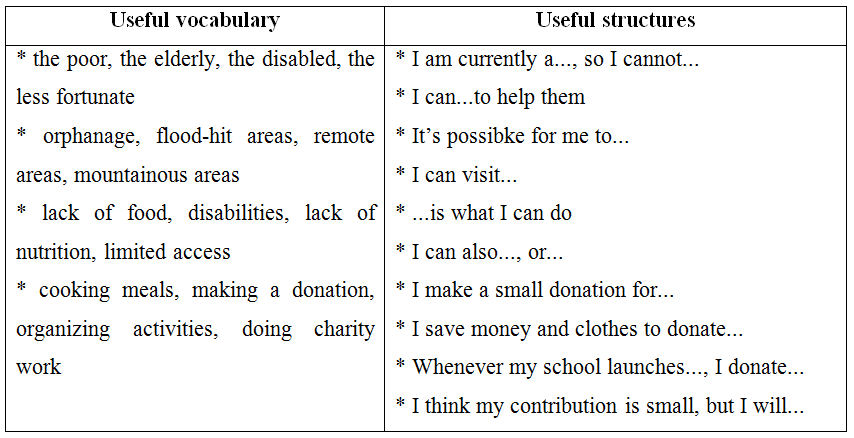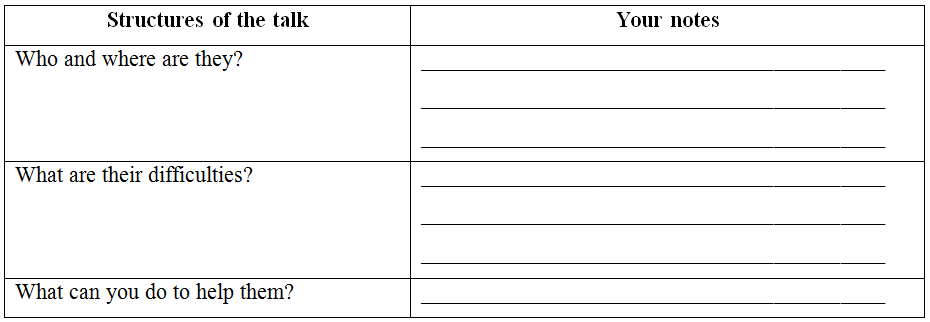Read the passage and choose the best answer to each of the following questions.
There are many ways for dioxin, the toxic contaminant in Agent Orange, to enter the human body.
To estimate the number of Vietnamese who have been impacted by Agent Orange, it is necessary to separate the exposure into three modalities. First is the past direct exposure to the poison in wartime. Second are those who may have been exposed to dioxin during or immediately following wartime through the contaminated soil or consumption of contaminated fish and animals. Third are those who are currently being exposed to the dioxin contaminant that remains in the soil. In addition, there are those in the second and even third generations who were not directly exposed but are potentially being impacted due to their parent’s or grandparent’s exposure.
The population of South Viet Nam during the years of herbicide spraying was approximately 18 million. Jeanne stellman and her colleagues at Columbia University Mailman School of Public Health estimated that up to 4.5 million Vietnamese were living in the 3,181 villages that were directly in the spray paths and were potentially exposed to the dioxin. In addition, approximately a million more soldiers who were fighting in southern Viet Nam during the war were potentially exposed as they traveled through the sprayed areas.
Unfortunately, there are not any firm figures for the number of adults who suffer from or have already died from illnesses associated with exposure to Agent Orange. We also do not know for sure how many children and youth have disabilities that may be attributed to their parents’ or grandparents’ exposure to the herbicides.
(Excerpted from Agent Orange Record)
1. There are_________modalities of dioxin exposure. Giải bởi Vietjack
Giải bởi Vietjack
Dịch nghĩa toàn bài:
Có nhiều cách để đi-ô-xin, hóa chất độc hại có trong chất độc màu da cam, xâm nhập vào cơ thể con người. Để ước tính số lượng người Việt Nam bị ảnh hưởng bời chất độc màu da cam, cần phải phân chia phơi nhiễm ra thành ba hình thức. Thứ nhất là tiếp xúc trực tiếp với chất độc trong thời chiến ở quá khứ. Thứ hai là những người có thể đã tiếp xúc với chất độc da cam trong hoặc ngay sau thời chiến do đất bị nhiễm độc hoặc ăn cá và động vật bị nhiễm độc. Thứ ba là những người hiện đang tiếp xúc với chất độc hóa học đi-ô-xin vẫn còn trong đất. Ngoài ra, có những người ở thế hệ thứ hai và thậm chí thứ ba không tiếp xúc trực tiếp nhưng vẫn có khả năng bị ảnh hưởng do cha mẹ hoặc ông bà của họ tiếp xúc với chất hóa học.
Dân số miền Nam Việt Nam trong những năm phun loại thuốc diệt cỏ đó là khoảng 18 triệu người. Jeanne Stellman và các đồng nghiệp của cô tại Trường Y tế Công cộng Mailman, Columbia ước tính rằng có tới 4,5 triệu người Việt Nam lúc đó đang sống trong 3.181 ngôi làng nằm ngay trên con đường bị phun thuốc và có khả năng bị phơi nhiễm với chất độc da cam. Thêm vào đó, khoảng một triệu binh sĩ đang chiến đấu ở miền Nam Việt Nam trong chiến tranh cũng có khả năng bị phơi nhiễm khi họ đi qua các khu vực bị phun thuốc.
Đáng tiếc là không có bất kỳ số liệu chắc chắn nào về số lượng người trưởng thành mắc phải hoặc đã chết vì các bệnh liên quan đến phơi nhiễm chất độc da cam. Chúng tôi cũng không biết chắc chắn có bao nhiêu trẻ em và thanh thiếu niên bị khuyết tật do cha mẹ hoặc ông bà của họ bị phơi nhiễm với loại thuốc diệt cỏ này.
Đáp án: A. 3
Dịch nghĩa câu hỏi: Có_________hình thức phơi nhiễm với chất độc da cam.
A. 3 B. 4 C.18 D. 3,181
Giải thích: Thông tin ở câu đầu tiên đoạn 2: “To estimate the number of Vietnamese who have been impacted by Agent Orange, it is necessary to separate the exposure into three modalities.”Gói VIP thi online tại VietJack (chỉ 400k/1 năm học), luyện tập gần 1 triệu câu hỏi có đáp án chi tiết
4. It is_________to use words like ‘dumb’, ‘blind’ and ‘deaf’ to the disabled. (RESPECT)
Talk about what you think you can do to help people in need.
You can use the following questions as cues:
* Who and where are they?
* What are their difficulties?
* What can you do to help them?
Useful languages:

Complete the notes:

Now you try!
Give your answer using the following cues. You should speak for 1-2 minutes.
1. I am currently a..., so I cannot...
2. I can...to help them
3. I can visit...
4. I can also..., or...
5. I make a small donation for...
6. Whenever my school launches..., I donate...
7. I think my contribution is small, but I will...
Now you tick!
Did you ...
- answer all the questions in the task?
- give some details to each main point?
- speak slowly and fluently with only some hesitation?
- use vocabulary wide enough to talk about the topic?
- use various sentence structures (simple, compound, complex) accurately?
- pronounce correctly (vowels, consonants, stress, intonation)?
Let’s compare!
Finally, compare with the sample answer on page 190.
3. He_________blind. He became visually impaired after an accident.
4. He began to teach English for disabled children in 2002. (since)
→____________________________________________
1. She has used a wheelchair since her bones (fracture)__________in the car accident last year.
Write an essay (150-180 words) about problems that people living in remote and mountainous areas in your country may face.
* You can use the following questions as cues:
* Who are they?
* What are their problems?
* Why do they have those problems?
__________________________________________________________________
__________________________________________________________________
__________________________________________________________________
__________________________________________________________________
__________________________________________________________________
__________________________________________________________________
__________________________________________________________________
__________________________________________________________________3. This campaign has been launched since 1999. (for 20 years)
→____________________________________________
1. The charity raises a fund of thousands of dollars for the underprivileged so far.
8. He has been a volunteer for Youth Blood Donor Organisation_________.
1. The last time I saw her was 5 years ago. (for)
→____________________________________________
1. People in my neighborhood have_________more than $400 to the charity.
1. This non-profit organisation_________milk for hundreds of children in this remote area.